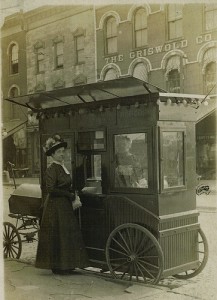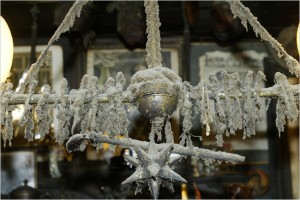I was sitting in a darkened theatre on Saturday, munching handfuls of popcorn, when suddenly the entire tradition of movie popcorn struck me as absurd. In Brooklyn, so much as whispering through a movie would probably get me punched in the face, but I am allowed to eat the loudest, smelliest snack possible a mere two feet from another patron’s head, and no one is allowed to say anything. I think this revelation was spurred mostly by the fact that we were watching the dismal and quiet French film Amour (spoiler alert: unhappy beginning, unhappy middle, unhappy ending, followed by me extacting a sworn statement from Jason that he would never smother me with a pillow, diapers or no), but even so, I couldn’t help but consider the weirdly powerful love affair between celluloid and popcorn. After all, potato chips and corn chips and pretzels have the same salty-oily-crunch factor, and though those snacks are more popular in virtually every other venue (including the realm of house cats), cinemas are the domain of popcorn alone.
Apparently, like any number of romantic pairings, the match between popcorn and movies began because both parties were in the right place at the right time. The portable popcorn popper and the nickelodeon were bright young things together in the late 19th century, and it didn’t take long for popcorn vendors to start parking their carts outside the theatres to take advantage of the crowds. Later, the popcorn moved inside to boost theatre profits during the depression. Not even war could tear the two asunder: sugar was rationed during World War II, so candy disappeared from concession stands, but the War Department gave the official go-ahead to theatres to continue to serve popcorn. Continue reading


